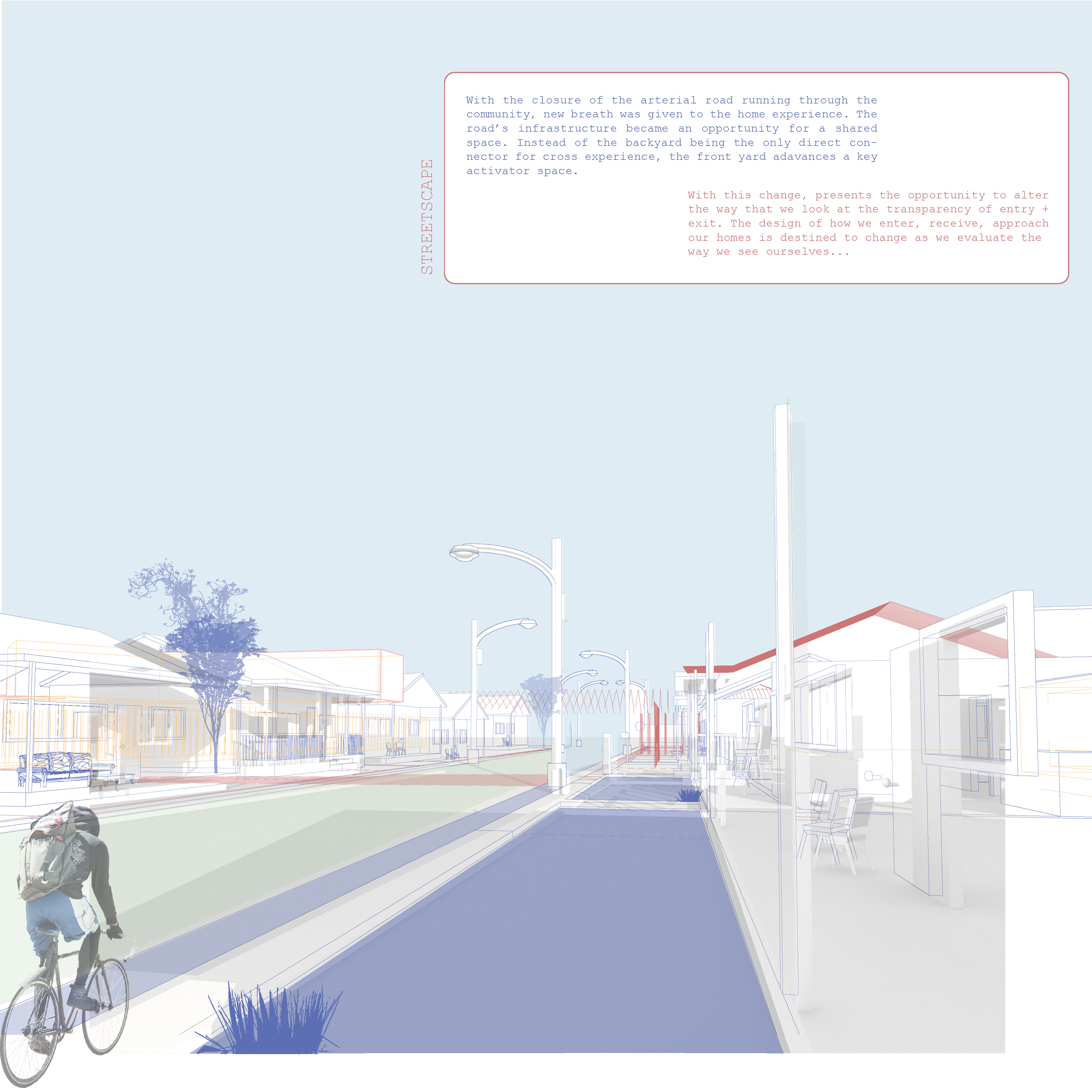








aesthetic authentication_
In this project, I explored the relationship between the existence and experience of under-served groups (and their formation by the external, social, and built environment). The core of this interest was how their state of content / discontent is manifested or materialized back into their environment through visual and formal agency.
There are two interrelated frames of my research that deal with the identity of the person within the community and the role of the community within the architecture. This discussion is important because the current conversations of how communities and infrastructures should be improved is often devoid of the opinions or influences of the people that activate these spaces.
The absence of black voices and speculation within the architectural discourse has left much of the cultural urban fabric under-discussed and undervalued in terms of architecture’s political and psychological impact. Therefore building upon the work of Mario Gooden, Mitchell Squire, Walter Hood, and others, my work interjects into the conversation of how architectural neglect can be used to shape a speculative approach to how we shape interactions and what we perceive as “aesthetically pleasing” and functional through architecture.
This project challenges the current conception of living spaces in overlooked communities. The topics of spatial politics, latent spaces, and architecture’s capacity to destruct our traditional notion of environments as a way of protest are at the heart of the project. Spatial politics can be defined as social indicators of space such as: power, agency, authenticity, memory, appropriation, preservation, and aesthetics. The core of this interest is how their state of content / discontent is manifested or materialized back into their environment through visual and formal agency. Latent space emerges on the site as underused and leftover space such as front yards, side yards, alleyways, etc.
A re-conception of territory and spatial usage can shift and alter our communal identity.
I have chosen to approach this concept through exploring a series strategic moves acting on the urban scale, shifting how our cities delegate space, use of private AND public space (how we relate to our neighbors), and how people access space. Rights to territory and programming are at the center of questioning. Through narrative and testing possibilities, the goal of this to start a conversation addressing the question of: what if collective zones of inhabitants came together and created an adjusted way of living that provides necessary programming, but also rebels against current policy and codes? What could that look like?
Independent Research Project ︎
2019
Site
︎︎︎ Archetype of the Southern Black Hood
Advisors
︎︎︎ Jennifer Akerman, Marshall Prado, Julie Beckman
Responsibilities
︎︎︎Concept Development, graphics and book production,community based research and analysis,GIS mappin